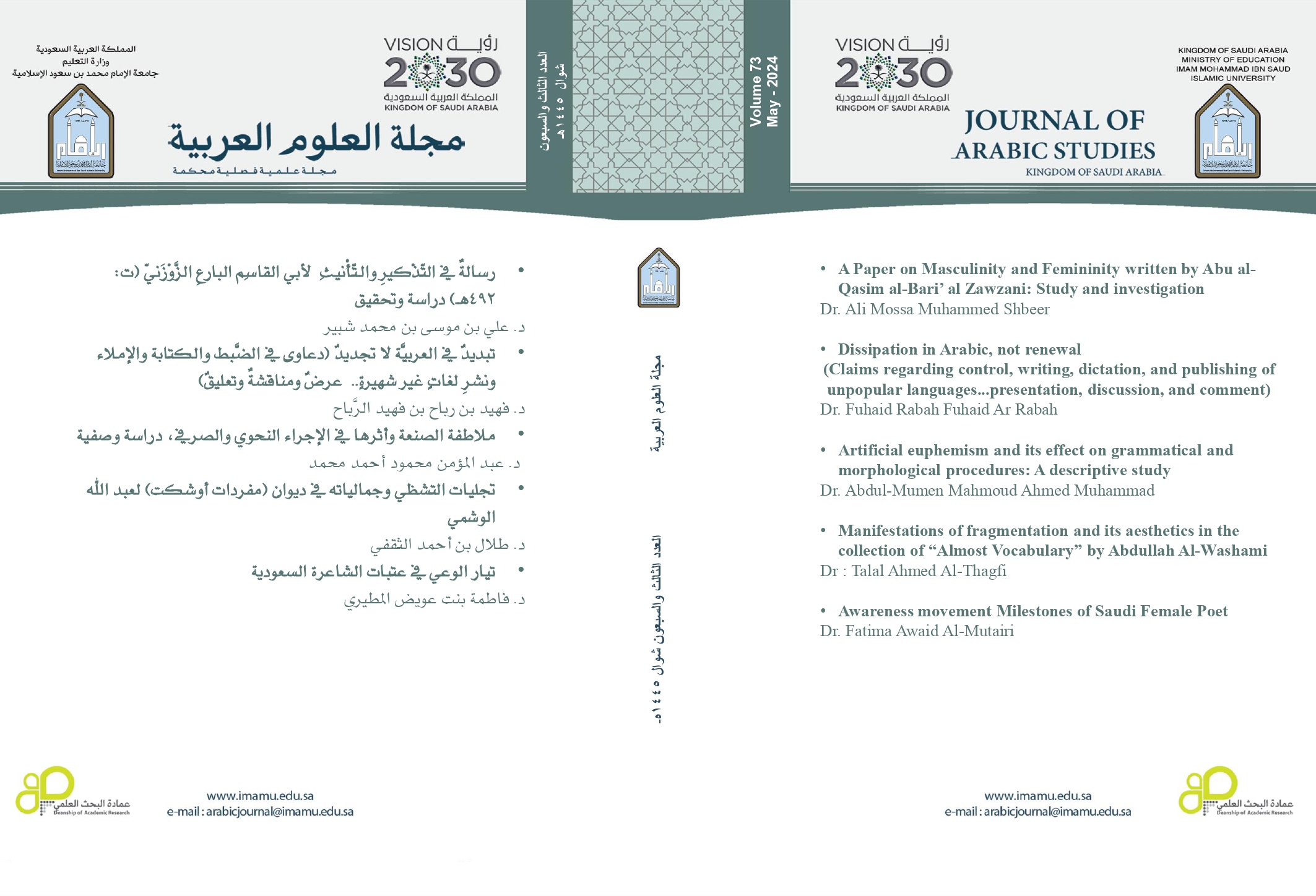Awareness movement Milestones of Saudi Female Poet
Keywords:
عتبات- تيار- وعي- شاعرة- سعودية.Abstract
The objective of this study is to uncover the mental imagery that precedes the awareness of Saudi poets, transforming into meaningful linguistic headings and semiotic symbols that reflect the aesthetics of a succinct and balanced image within the framework of structural aesthetics. It constitutes an analytical inquiry aiming to comprehend the progression of these transitional points, encompassing both comprehensive and fragmented imageries distilled into brief expressions. Moreover, this study significantly impacts the very process of creativity.
The research identified that this revelation of structural semiotics, characterized by its stylistic elements, revolves around two primary meanings that profoundly influence the creative essence of Saudi poets: namely, a sense of identity and self-awareness in relation to others. The sense of identity becomes apparent through the language employed by the poet, embodying her individuality, identity, as well as cultural and psychological experiences. Manifesting in various forms, it imbues words with a distinctive essence, steering them away from their conventional connotations towards novel meanings that arise from the ambiguity within the current of consciousness.
Regarding the consciousness of self and others within the realms of Saudi poets, it follows an upward trajectory with the enhancement of self-awareness and the elevation of the spirit. The poet's sense of self is adaptable, receptive, and achieves a state of completeness in relation to others. The study asserts that this duality of self and others signifies a distinctive consciousness for each poet. Their self extends and intertwines with the perception of the other, underlining the individuality of the Saudi poet within the context of the written word. Conversely, the poet holds the responsibility of advancing feminine consciousness through the medium of creativity.




